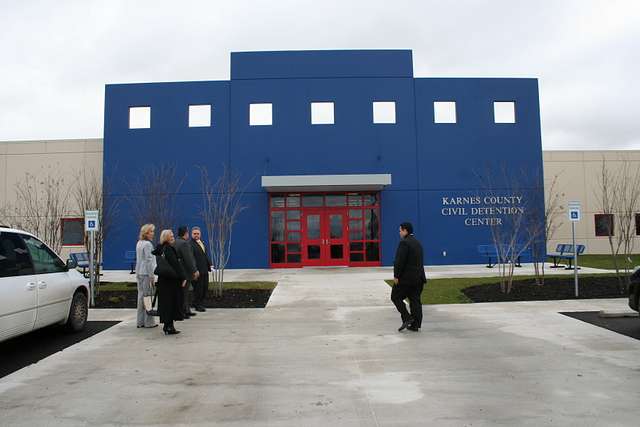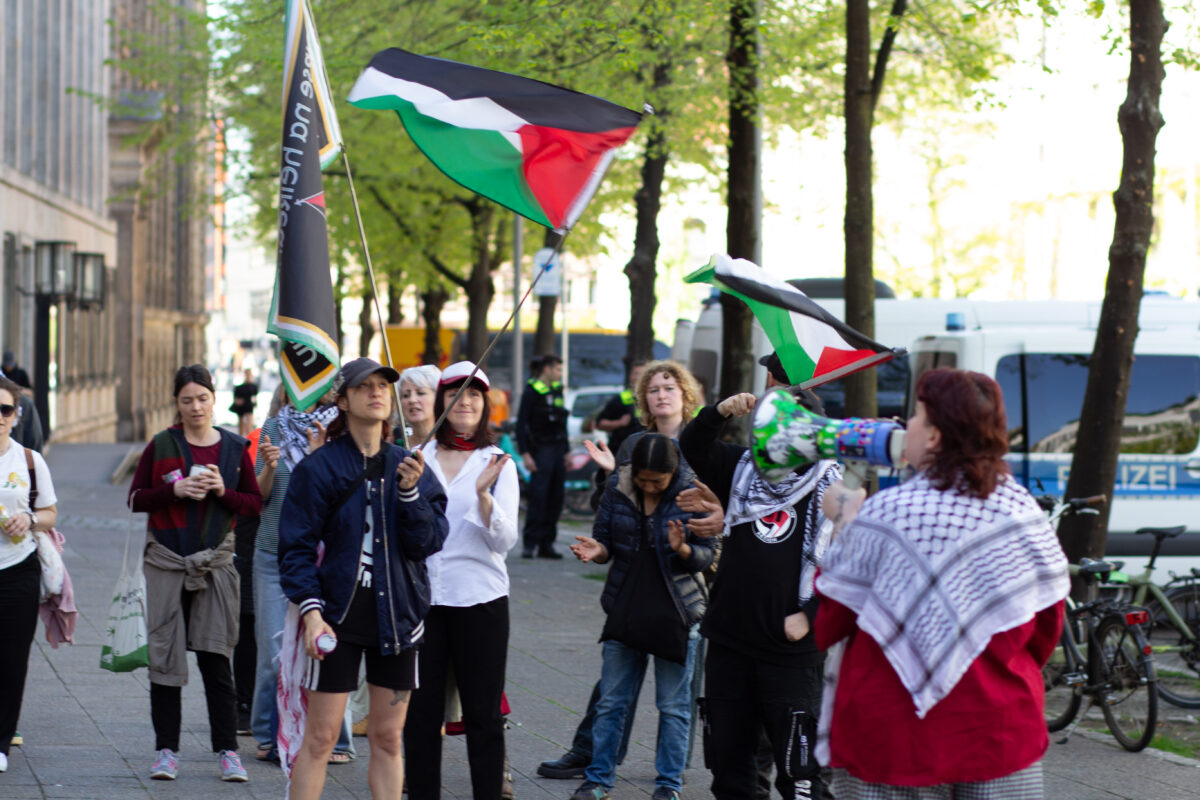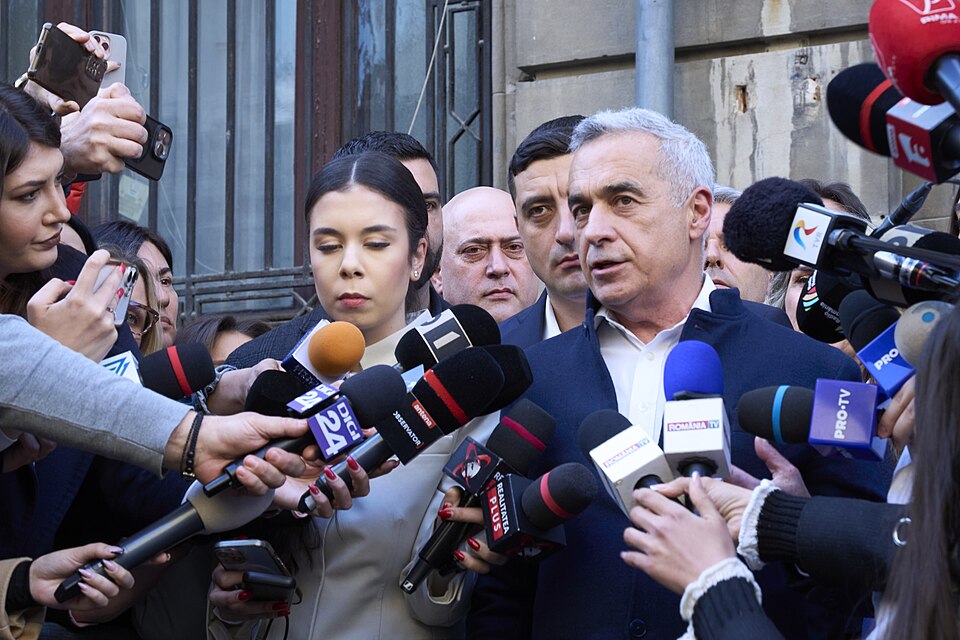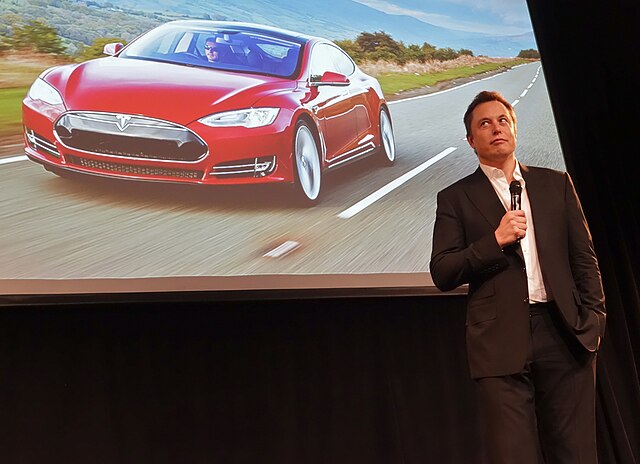At the time of the march
many do not know
that the enemy is marching at their head.
The voice that commands them
is the voice of their enemy.
And he who speaks of the enemy
is himself the enemy.
Bertold Brecht, ‘The Enemy’.
I was only 26 years old
I was 26 years old. I believed that this world could be fixed. I believed I was on the right side. And I believed I was clear about who my enemies were.
Only a few months earlier, in January, George W. Bush had taken office in the White House for his first term as President of the United States. That day I was in San Francisco, taking part in a huge demonstration protesting, to no avail, against the fraudulent way in which the Republicans had snatched victory from Al Gore by winning Florida only a couple of months earlier.
In Italy, too, things had not gone as hoped. Silvio Berlusconi had just been elected Prime Minister, winning the election with the centre-right. And it seemed unprecedented. Since the early elections of 1996, which ended Berlusconi’s first experience in government prematurely, we had thought that such a person would never again govern Italy. Even less so people like Umberto Bossi or Gianfranco Fini.
[Editor’s note: the right winger Silvio Berlusconi was elected Italian president in May 2021 as part of a coalition which included Umberto Bossi’s Lega Nord and Gianfranco Fini’s National Alliance. Both were far right parties in which Nazis were active]
In previous years, I had travelled a lot in the former Yugoslavia. I had been to Bosnia several times. I had set up twinning projects. In December 1998, I was in Kosovo, working as a non-violent barrier between the Yugoslav army and the Albanian rebels of the KLA, in villages in the countryside that had been the scene of massacres.
I came back with many contacts. When the bombing started a few months later, I called them on the phone, recorded the conversations and broadcast them on the radio.
When Bush and Berlusconi, only a few months later – both having won their elections – met in Genoa, I didn’t like the direction the world was taking.
But the left in Italy had deserved that defeat, throwing away its own identity, its own sense of history.
That’s why there had to be another left. A left that might not have had full representation in parliament, but which was alive and made up of the stories and sensibilities of those who did not want to bend to the new principles of the world emerging from the collapse of the Soviet Union. After all, only 12 years had passed. There was still time and a way to change course. There had to be. I was only 26 years old. That’s why I went to Genoa.
Video-Activist
A few months earlier I found myself almost by chance becoming a video-activist (that’s what we called ourselves then). The digital video camera, one of the first, was not even mine. At the Bicocca University in Milan there was a Visual Sociology Laboratory, one of the first in Italy. I had stumbled into it by chance and found myself with a video camera in my hand.
“Do you want to come and film the G8? We’ll need to film everything we can”.
And so it was that I found myself collecting a ‘pass’ for the ‘red zone’ at the beginning of that week, as early as 16 July. A handful of us had been chosen to get official accreditation and freedom of movement in the city.
To our amazement and bewilderment, we discovered what they meant by “red zone”. Several-metre-high railings resting on concrete blocks marked off the port area and the centre of Genoa. While they militarised Genoa, we militarised ourselves in our own way.
We too, in some way, saw ours as a militancy, a struggle, a battle. But the ‘media centre’ was our headquarters, and our weapons were the video cameras. Independent information. “Become your media’ was our philosophy.
But it wasn’t just reporting, it was also documenting. Yes, because in those days, under the patronage of the “Genoa Social Forum“, various initiatives and peaceful demonstrations of great importance were held. Nothing happened with regard to public order. Everything took place without tension, indeed, with a certain euphoria – given the importance of the event and the joy of seeing so many people, realities, organizations, gathered from all over the world to join the struggle.
Of course, there were helicopters flying overhead at low altitude, plainclothes agents on street corners who in turn filmed the marches. There was always a horizon of cops and trucks somewhere. There were also urban legends that popped up just to keep you on your guard. But more than one of us wondered if they hadn’t needlessly spent all that money on militarising the city.
As far as I was concerned, the event could have ended there. They were locked up like thieves in a cage inside the ‘red zone’ and we were free outside to meet, talk to each other and imagine what was then called ‘the other possible world’.
Via Torina was a perfect movie set
I didn’t take any instructions that morning. I didn’t even have time to have breakfast in the red zone. Too much tension in the air, too much chaos, too many people everywhere. I started walking back and forth on Corso Torino with my small video camera in my bag. I was trying to breathe the air, to understand the movements, the intentions. To understand who was who.
A Carabinieri truck was set on fire at the end of Corso Torino, at the corner of Via Tolemaide. From this street, the “White Suits” would have come down, on Corso Torino they would have had to pass. Probably, the clashes would have taken place there, because there is more space on the corso than on all the other surrounding streets. More space, not for the clashes, but for the video cameras, for which would have been easier to film. Or continue towards Piazza Verdi.
[Editor’s note: The White suits / White overalls or Tute Bianche was a group of Italian anti-globalisation activists who went to the front of demos in padded suits and white suits to protect demonstrators from police violence. Some accused them of escalating violence]
The iron cages of the red zone were not far away now. Corso Torino and Piazza Verdi were an excellent place to negotiate and play a symbolic invasion of the red zone.
But something in the air was not right. The policemen were not there to act as extras in a theatre. I could tell from their speeches, as I walked past different departments, with my pass clearly visible on my chest, whistling.
I could tell by the excessive number of exaggerated people I had not seen in the previous days. I could tell by the use of some guerrilla techniques that I had never actually seen used in those years: cars set on fire, rods to break shop windows and ATMs, violence not only against the symbols of power, but against anything they liked.
Not that I was scared. A few years earlier, in the mountains of Kosovo, I had been in the middle of a real war, a volunteer in a civilian nonviolent intervention force. I had seen death, gunfire, bombs. But I wondered how it would end.
It wasn’t the violence itself that frightened me. It was seeing the total military unpreparedness of the protesters. In Kosovo, on one side was the regular army, but on the other side were heavily armed guerrillas.
Here there were units in riot gear, armed as in war on one side. On the other side were students, workers, families. Totally unprepared for the fight. In fact, many of them completely uninterested in the clash.
Except for the “White Suits” otherwise known, not without a sense of crypto-irony, as the ‘Disobedients‘. They needed the clash. They had proclaimed it. They had to play the role of the naughty children.
But someone deprived them of this role, overpowered them, forcing them to bring the threshold of confrontation where the square would not hold.
In short, they acted as bait.
The Disobedients
When the charge in Via Tolemaide had not yet started, Corso Torino and its side streets were already a battlefield. Scattered from other scuffles and secondary charges people had poured in to find some respite. The first tear gas was thrown into the small side streets, you couldn’t breathe in there. Even the policemen. Not only could we no longer breathe, but it was even difficult to see us now. Yet I had breathed in tear gas in the previous two years. These gases were different, stingier, more caustic, more toxic.
I tried to squeeze through a few alleyways, knowing that the march on Via Tolemaide was still a long way off. It was already surreal. The first policemen had come down too hard. Not with beatings yet but with tear gas. They were nervous, their hands had slipped. Everyone, policeman or demonstrator, was running in every direction. Turn a corner and out of the fog could emerge a policeman fleeing from a group of protesters. Turn another corner and you would come across a group of policemen harassing a protester who had fallen behind.
And it all had yet to begin. Because it all started at 2.53 p.m. on Friday 20 July 2001, that cursed day.
The dynamics have been reconstructed and are now known.
“Nooo!… They charged the white suits, damn it! They were supposed to go to Piazza Giusti, not towards Tolemaide… They charged the white suits who were supposed to get to Piazza Verdi.” So says an excited officer in a service communication recorded in those minutes.
What had happened then?
At 2.30 p.m., the operations centre of the Police Headquarters had requested an intervention by the Alfa Company of the Ccir (Contingent of containment and decisive intervention) of the Third Battalion of the Lombardy Carabinieri: “Please, you must go quickly, however, to Piazza Giusti, where there is a group of a thousand anarchists who are destroying everything. You can get there by going straight along corso… where you are now, until you get to the crossroads with corso Torino, turn left and go straight. But you have to do it immediately because another march is coming down Corso Gastaldi”.
Once at the crossroads between corso Torino and via Tolemaide (which later changed its name to corso Gastaldi) the unit got lost, got confused, forgot the objective for which they had been asked to intervene and charged the ‘White Suits’.
Real life
From a military and square management point of view, the story begins and ends here. A recently converted department of the Carabinieri, full of ex-soldiers from the war in Somalia, after getting lost (after all, they were used to the open spaces of the Somali desert, not the narrow streets of the city), unleashed against the wrong protestors and started doing what only they knew how to do: slaughtering people.
And the ‘White Suits’, who had made themselves picturesque Plexiglas protectors for the occasion, great for stage photos, were swept away as in a macabre comic strip. The railway wall on the right for those descending with the march reduced the escape routes.
From that minute, 14.53, until the shot that killed Carlo Giuliani in Piazza Alimonda, not far away, at 17.27 minutes, the collapse of a generation was manifested.
2 hours 35 minutes of all against all, of ignorant madness, of blind nonsense, of blood, tears, blows, anger, frustration, gratuitous violence.
The strategy of the “White Suits” failed miserably. Because although it presented itself as a military strategy, it was actually a precarious balance above madness. The operative centre of the Questura (Police Headquarters) put its own, much of its own, into it. But it is stupid to complain of having been burned when one wanted to play with fire. That was the horizon of an immature and childish generation, that of the game, of fiction, of acquired privileges, also in the antagonist mode.
Those leaders and ringleaders were allowed to defend themselves behind the so-called “disproportionate reaction of the forces of law and order”. They thought they were going to a film set, but they found real life. One of us found death.
The raid on the Diaz school
The story of those days cannot end here. Because that equally sad day, 21 July, had not yet said it all. In fact, an even worse surprise awaited us.
We all returned to the “Media Centre” in the “Pascoli” school. People were dismantling: computers, printers, video cameras, telephones, everything was being stored and taken away.
For the Italians, there were special trains that would take people home. “What, so soon?” There was perhaps a need to stay together one more evening to try to understand together how everything could have gone so wrong.
But there were the special trains, better to go. There would be time over the next few weeks to see each other again and talk.
But I slept in the camper van and had come from Milan on my motorbike. It was decided to stay an extra night and leave the following morning after a few hours’ sleep.
I started phoning from the Milanese classroom, which was now empty. I spent perhaps hours on the phone, because I wanted to be as far away from that place as possible in my mind. I was there, alone in that classroom, while the whole school building had emptied out in the meantime.
When I heard the policemen shouting from the courtyard, I realised that I had lost all sense of time. It had long since gone dark outside the windows. It was just after midnight. I left the person I was talking to on the phone for a moment and looked out of the window on the side of the school. I could see the entrance gate from there. I saw several dozen policemen in riot gear with helmets, shields and truncheons. I went back to the phone and put off the call until a better time.
I paralysed myself in the middle of the classroom. I tried to think back. It had been a while since I had heard any more noise in the building. Was I the last person left inside? I thought back. There were only two possibilities that came to my mind: to stay in the classroom and wait for the cops to come up and then present myself with my hands up and try to prove that I was innocent, or to throw myself out of the second-floor window? I thought about it for just a couple of seconds and I was already standing with my knee on the windowsill ready to throw myself from the second floor. I had a glimpse of a nice flowerbed in the dark where I would hide when I landed, who knows in what state, on the lawn of the schoolyard.
Until a cry came from the school corridor. A girl hurriedly shouted: “Everyone in the Gap radio room!”. I asked myself: “Everyone who?”. So I wasn’t alone.
I put off jumping out of the window and followed the girl into the corridor. We hurriedly erected a barricade on the stairway with the school desks. And then we ran with others to the classroom where ‘Radio Gap‘, the movement’s radio station – the only ones still operating in Genoa, was still broadcasting live.
After a few minutes the police broke into the classroom. There is a famous audio of the live broadcast of those minutes:
“It’s a Chilean scene, they are breaking down our door, they are breaking down our door… I don’t know if you can hear it….
– They’re trying to break down our door on the second floor… Well, hands up, passive resistance, guys: a live eviction. Radio Gap is being evicted. Let’s stay calm…
– Sit down… guys, calm, sit down and raise your hands… We will continue to denounce what this criminal state and fascist police are doing…
– Here they are, they entered… the policemen entered the radio…
– …who entered the radio station, truncheons in hand and helmets on their heads… at this moment they are signalling to stay down…
…with batons in hand and riot helmets… the repression live on Radio Gap”.
I was inside the classroom at the time, along with about twenty other guys and some radio editors.
The policemen were surprised, stunned, to realise that their action was being recorded and they were being smeared live in real time. They stood with their truncheons in the air: “Ah, well, we just wanted to check your documents”, they said, frightened of being denounced for an action whose premises were as shaky as its legality.
We remained under guard for about an hour, however, without being able to leave the courtroom.
As soon as it became clear that we would not be harmed, we rushed to the classroom windows, which inevitably overlooked the “Diaz” school, just a few dozen metres away.
That’s where the “Mexican butchery“, as it became known, was taking place. Fifteen uninterrupted minutes in which dozens of policemen beat to a pulp, as everyone knows, about a hundred demonstrators.
The blitz had been launched on both schools. The “Pascoli” school, our school, was by then empty, except for those like me, who in the end saved themselves by taking refuge in the Gap radio room.
The ‘Diaz‘ school, on the other hand, was full of young, defenceless boys and girls, mostly foreigners, who would have left the next day. They had been unable to take advantage of the special trains with which the Italian State had already brought the Italian demonstrators home.
Those 15 minutes were a living nightmare for our ears.
Many of us went mad, tearing our hair out and throwing ourselves on the floor. Some tried to jump out of the window. The helplessness was killing us, the frustration of not being able to do anything, of feeling we had escaped in the middle of a butchery.
I managed to pull out my video camera and took some of the few images that capture those minutes of the blitz. You can easily recognise them, they are the ones with the black mask at the top and bottom of the screen.
When, after an hour, the time it took to evacuate the wounded from the Diaz school, the policemen let us out of the classroom, the barricade in front of the “Diaz” school was also removed. I was among the very first to enter the now deserted school.
I saw it with my own eyes and my video camera, the “Mexican butchery”: the puddles of blood on the ground, the smears of blood on the walls, the clumped locks on the radiators, the soiled backpacks, the sleeping bags, the notebooks, the clothes thrown everywhere.
I was not impressed. I had already seen worse.
I was offended.
All this had happened in my country.
This is an extract from an article which was originally published in Italian in L’Antidiplomatico. Reproduced with permission



